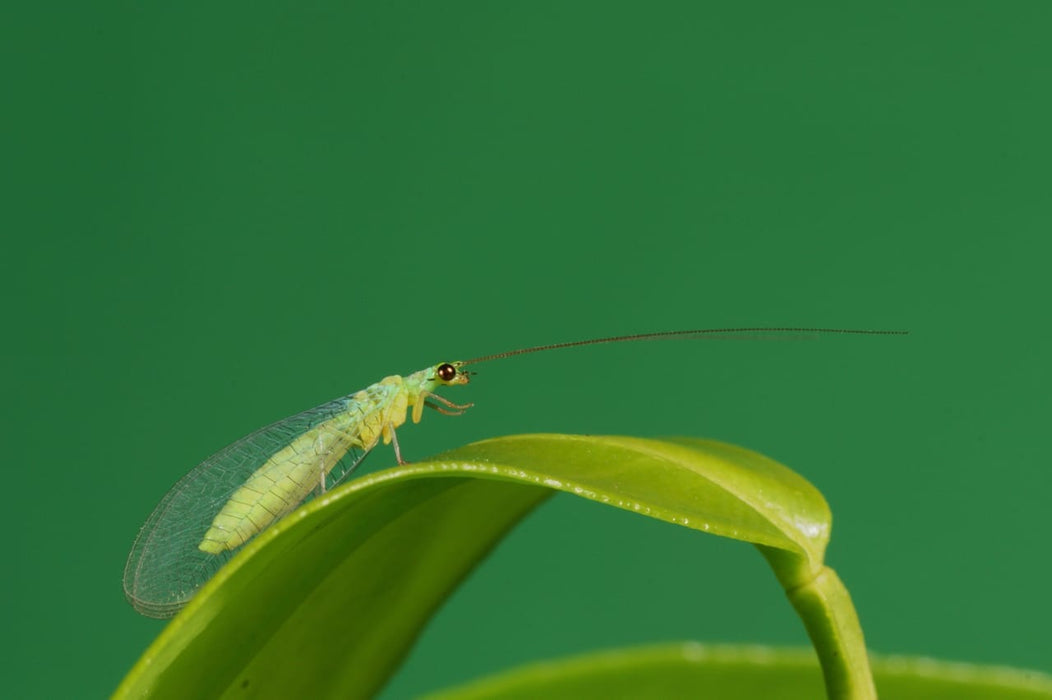
Bugs For Bugs Lacewings
!!PLEASE NOTE THERE IS A $85 QUARANTINE INSPECTION FEE + SHIPPING FOR ALL BUGS FOR BUGS ORDERS TO WESTERN AUSTRALIA!!
A generalist predator for the control of a wide range of pests including aphids, caterpillars, mealybugs and scale insects. Supplied as adults in packs of 100, or as eggs (which hatch into larvae during transit) in packs of 500.
Green Lacewings (Mallada signatus) are hardy, generalist predators that feed on many small insects including aphids, caterpillars, moth eggs, scale insects, mealybugs, psyllids, and lace bugs. They are among the most common and widely distributed native lacewings in Australia.
Adults are green, 15 mm long, and have large ‘lacey’ wings. They live for 3-4 weeks, feeding on nectar, pollen and honeydew. Adult female Lacewings lay up to 600 eggs. Each egg sits on the end of a slender stalk. The larvae are often called ‘trash carriers’ or ‘junk bugs’ because they carry the remains of their prey on their backs. They have two pairs of hollow jaws which they use to grasp and then suck out the body fluids of their prey. Larvae range in size from 2 mm at first emergence to 8 mm just before they pupate. They pass through three moults before pupating inside a silken cocoon. Adult females start laying eggs about a week after emergence.
Also available in a ‘Garden Pack‘ containing 500 lacewing eggs, 6 lacewing release boxes and 2 yellow sticky traps.
Key target pests
- Aphids
- Caterpillars
- Mealybugs
- Scale insects
Advantages
- Prey on a broad range of pests
- Useful in situations where no specific biocontrol agents are available
- Active under a wide range of environmental conditions
- Larvae provide efficient hotspot treatment when used as a ‘biological insecticide’
| Situation | Rate (per release) | No. of releases | Release interval |
| Outdoor crops | 400-600 adults/ha | 1-3 | 2 weeks |
|
Hotspot treatment (outdoor or protected crops) |
10-50 larvae/m2 | as required |
1-2 weeks |
